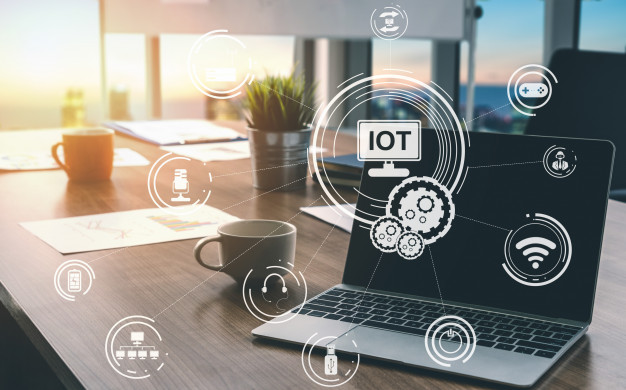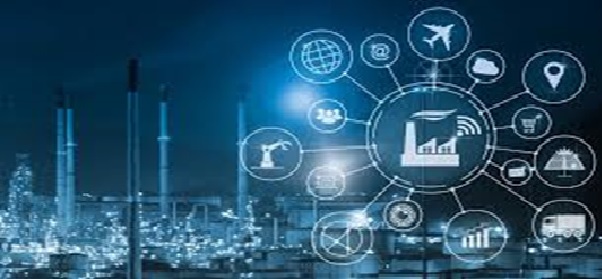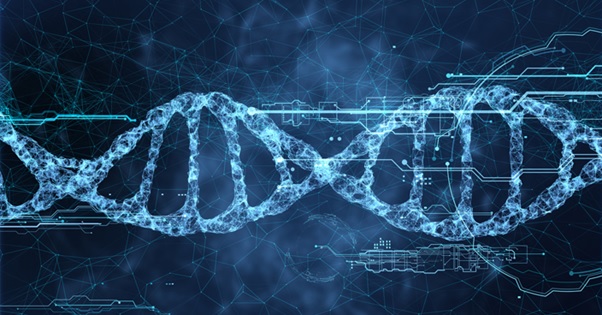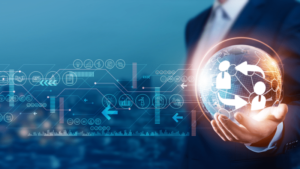
As Internet-of-Things technology is constantly evolving, IoT trends are worth following and tracking. We have already covered IoT in previous blog posts. We tried to explain the concept of IoT as a way for computers to gather information, perceive and understand the world by themselves. We also looked at some of the most prominent examples of IoT. In this blog post, we have put together seven major IoT trends that 2019 brought and predicted what IoT trends to expect in 2021.
The future of IoT Across all Industries
IoT has been evolving for some time. Internet-of-Things technologies are successfully transforming businesses and changing the way they are optimally managed, following the introduction of new metrics for the post-ISA era. These technologies are impacting almost every industry today: healthcare, insurance, smart buildings, manufacturing, transportation and logistics, retail, and many others.
The changes needed will depend largely on the devices you focus on, the size of your target market, and, most importantly, the industry in which you operate. While some of the general current trends in IoT are quite visible across all industries, industry-specific forecasts should not be overlooked. Whether it’s industrial IoT trends for 2021, such as those specific to manufacturing, or those related to healthcare or transportation.
| IoT trends in Healthcare
- IoT is well suited to the needs of the healthcare sector. The most in-demand areas for IoT adoption are:
- Remote patient monitoring using wearable devices with built-in sensors that monitor the patient’s condition.
- Optimizing daily hospital operations by managing medical devices and facilitating customer service.
- Disease prevention and monitoring are enabled by mobile apps connected to IoT devices.
| IoT trends in the Industry

Heavy industries such as manufacturing involve complex systems and process control inside and outside factories. Industrial IoT platforms can not only expose workflow inefficiencies but also reduce them. These are the main improvements that IIoT platforms will bring to the industry:
- Production maintenance
- Inventory management
- Industrial big data analytics
| IoT trends in the Transport sector
IoT adoption in the transport and logistics industry is already high and accelerating. By investing in new technologies, transport companies are reducing transport or freight costs and improving efficiency. The latest IoT trends that are changing the way people and goods are transported include:
| Predictive diagnostics and vehicle maintenance using IoT
IoT-based predictive and predictive analytics, including predictive analytics and vehicle-to-vehicle (V2V) communications.
In any case, these sector-specific IoT future trends are special cases of general trends in IoT applications, which we will discuss below. Gartner recently identified 10 key IoT trends to watch out for in 2021. These trends include:
- Hyper Automation
- Multi experience
- Democratization of expertise
- Empowering people
- Transparency and traceability
- Empowered edges
- Distributed cloud services
- Autonomous issues
- Practical blockchain
Based on this list, we would like to discuss in a little more detail IoT trends related to the increase in people, the rise of security challenges, practical blockchains, AI, the growth of enterprise IoT spending, 5G networks, and the authorized edge.
1| The Power of Connectivity and the Growth of IoT
The main IoT trend in 2021 will be the expansion of IoT networks of devices that interact with people, and the amount of data collected from these networks will also increase. We are consciously embracing a new way of life in which we are constantly connected. It seems impossible to ignore this, and the IoT industry is coming to meet us.
Gartner has called this trend “Human Augmentation”. Not only human connectivity but also universally connected devices are a factor that can transform our everyday experiences. The intertwining of these two things will thus lead to a connected smart world.
The driving force behind improving IoT networks in industries that promote sensor-based technologies is data. The more information an organization or business has about users’ connected devices, the more likely it is to be able to offer its customers personalized experiences, meet their needs, and predict their behavior.
The need for data thus creates the basis for consumer IoT trends. Internet-of-Things applications are now being tested in an increasing number of verticals. In this way, organizations are trying to improve the user experience and increase the quality of services provided. Connectivity technologies are also being developed in abundance, and each company can take advantage of the technologies that best meet its functionality requirements.
As a result, the more connected devices there are, the more consumer data is collected. This puts the onus on business owners to create and maintain security policies.
2| IoT security trends: Highlighting Security Issues
The maze of connectivity will inevitably unravel some of the cybersecurity challenges of the IoT future. Some connectivity solutions, such as Wi-Fi, are not reliable enough. Moreover, the networks on which these devices run are highly vulnerable due to their fragmented nature. This problem will become even more acute in 2019, highlighting another IoT trend that needs to be addressed.
First, regulations such as the GDPR can help close security gaps in IoT devices and force individual users or organizations (e.g. healthcare, education, government, or businesses) to monitor all devices to effectively respond to security breaches. Secondly, systems such as mobile device management systems and network access control systems are likely to become increasingly popular as means of mitigating the risk of data breaches. In particular, they allow users to monitor the number of devices connected to their network, their owners, data leaving the system, etc.
3| Blockchain technologies are shaping the future of IoT

Blockchain is one of the most important IoT technology trends today. The reliable exchange of money and data between IoT devices is becoming possible because blockchain technology provides a simple infrastructure for this. Together, these two phenomena – IoT and blockchain – are living up to their hype. The distributed nature of IoT corresponds to the distributed nature of blockchain. The latter guarantees anonymity and security for multiple networks and their owners, while digital signatures and private keys that track every transaction guarantee the security of the IoT environment.
IoT devices are designed to make the life of an individual or a business entity easier. This requires the continuous generation of personal data and implies a higher risk of hacker attacks. Moreover, the amount of data is expected to grow exponentially as the number of interactions between machines increases. The distributed nature of the blockchain thus makes tons of data available when needed, with minimal security risks.
4| Advanced Management and Artificial Intelligence
The list of emerging trends in IoT would be incomplete without mentioning artificial intelligence. In the most complex cases, combinations of Internet of Things, blockchain, and artificial intelligence (the IBM case.) The rise of data is one of the strongest triggers for the changes that underpin most trends in the IoT industry.
IoT is essentially about collecting as much data as possible so that people can take sensible actions based on the information analyzed. Using AI support for IoT efforts, along with the shift to advanced data analytics, can provide the most reliable predictions. They can both contribute to smarter data management through intelligent automation. ML algorithms can automate processes, increasing accuracy and making the data collected more meaningful. This connection between AI and IoT can also be presented metaphorically. Artificial intelligence is thus a brain that makes intelligent decisions and enables a body (IoT) to act. In such circumstances, one is hardly possible without the other.
5| The Rise of Corporate Spending on IoT
All of the above trends in IoT will ultimately lead companies to increase their spending on IoT projects. IoT trends make capitalists believe that their money should be put into sensor-based technologies. IoT promises to make the customer experience better in almost every existing industry (and even in entirely new ones).
IDC reports that in the global market, spending on Industrial IoT (manufacturing, utilities, and transportation) will surpass spending on Consumer IoT. Also, the largest spending category – IoT hardware – will give way to IoT software and services shortly. Meanwhile, the fastest-growing sectors will be consumer (smart homes), healthcare (remote health), and retail (digital signage). Although the overall picture is not limited to these examples, the upward trend is likely to continue.
6| 5G networks in all sectors
5G networks will be rolled out across the globe in different sectors by 2020. This in turn will contribute to an increase in the number of IoT devices. 5G and IoT are seen as beacons for the fourth industrial revolution, which is still underway in 2020. Now is the time to link them together to drive technological transformation.
Fifth-generation mobile technologies offer faster and much more reliable connectivity, encouraging industries to transform their production and business processes accordingly. IoT and 5G together form an infrastructure for smartphones and tablets, but also wearables, medical devices, and vehicles. More devices will be connected to the Internet. This evolution of a 5G-powered IoT system will fuel the development of the smart city and networks of connected vehicles, improve operational efficiency in healthcare, and benefit manufacturing industries. A complete ecosystem of fully interconnected smart sensors and devices is expected to take shape shortly.
7| Strengthening Edge Computing in IoT
Edge computing is one of the most important industrial IoT trends in 2021. We have previously written an article explaining how IoT systems use edge computing. In 2021, this pair of technologies will come to the forefront.
Edge nodes and gateways connected to IoT devices and systems will help them reach different types of data centers. IoT data frequently has to drive long distances from the data hub to the device. But thanks to edge computing technology, they are less likely to experience low bandwidth or increased latency. As a result, the number of companies investing in edge technology continues to grow – and with it, the accuracy and quality of real-time insights are expected to soar.
| Conclusion
IoT is not implemented all at once. It is a step-by-step process that forms the basis of almost all digital transformations. IoT trends 2021 promise to shed light on both consumer and industrial sectors, showing that the future has already begun and that technology will continue to change our lives. Inevitably, you will face several challenges. So, to adapt business processes to the new opportunities, you first need to gain a thorough understanding of the latest trends in IoT and the obstacles they may pose. Then it will be easier for you to solve these problems and to extract and maximize the value of this knowledge.If you are looking for an IoT developer there are many software outsourcing companies in India that can help in implementing Iot development services in Industry.
Author Bio:
I’m Olivia Cuthbert, and I am a technical consultant and writer working for PixelCrayons. I am passionate about exploring and writing about innovation & technology and have been in this field for 4+ years.




